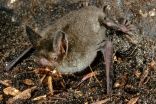New biomarkers might help personalize metastatic colorectal cancer treatment
Low levels of two genes predicts positive response to chemotherapy and longer survival times
2015-06-17
(Press-News.org) Metastatic colorectal cancer patients tend to live longer when they respond to the first line of chemotherapy their doctors recommend. To better predict how patients will respond to chemotherapy drugs before they begin treatment, researchers at University of California, San Diego School of Medicine conducted a proof-of-principle study with a small group of metastatic colorectal cancer patients. The results, published June 17 in PLOS ONE, revealed two genes that could help physicians make more informed treatment decisions for patients with this disease.
Metastatic colorectal cancer, the third deadliest cancer in the Unites States, is typically treated with two chemotherapy drugs, 5-Fluorouracil in combination with either oxaliplatin or irinotecan.
"Several large trials compared oxaliplatin and irinotecan head-to-head and concluded that the response rate is about equal. How an oncologist bases his or her treatment decision can be based on experience, comfort level prescribing and the patient's health," said senior author Paul Fanta, MD, assistant clinical professor of medicine and oncologist at UC San Diego Moores Cancer Center. "But in reality, the two drugs are very different. For any individual patient, one might be better than the other. As an oncologist, how do I know which is better for my patient? That's where this study comes in."
Fanta and his team used a commercially available test to analyze levels of the genes ERCC1 and TS in 41 patients with metastatic colorectal cancer. These genes encode proteins involved in building and repairing DNA.
The researchers found that 33 of their 41 patients had low ERCC1 levels. These same patients also had significantly longer average survival times (36 months) compared to patients with high ERCC1 levels (10 months). Similarly, 29 patients had low TS levels and significantly longer average survival times (36 months) than patients with high TS levels (15 months).
Twenty-two of the 41 patients had low levels of both ERCC1 and TS. Of that group, 20 -- 91 percent -- responded to oxaliplatin, suggesting that this should be the first treatment choice for patients with low ERCC1 and TS. Patients responded to irinotecan at the same rate whether they had low or high levels of these genes. This finding suggests that physicians might want to select irinotecan as the first-choice chemotherapy for patients with high ERCC1 or TS levels. These results are consistent with other studies evaluating the roles of ERCC1 and TS in metastatic colorectal cancer.
According to the authors, ERCC1 and TS profiling could help physicians better manage patients with metastatic colorectal cancer, individualizing and optimizing therapy for subsequent interventions such as surgical removal of metastatic tumors.
"Our study is small, retrospective and all of the patients were located at a single medical center, but it demonstrates that it's possible to use molecular diagnostics to identify subgroups of patients more likely to respond to a given treatment," said co-first author John Paul Shen, MD, senior clinical fellow and postdoctoral fellow. "Given this proof-of-principle, it's our hope that molecular biomarkers will be included in future prospective clinical trials in metastatic colorectal cancer."
INFORMATION:
Co-authors of this study also include Michel B. Choueiri, Andrew M. Gross, Justin K. Huang, and Trey Ideker, all of UC San Diego.
This research was funded, in part, by Arthur Athans in the name of his wife, Barbara Mae Athans, the National Institutes of Health (grants R01 ES014811 and U24 CA184427), Marsha Rivkin Center for Ovarian Cancer Research and Conquer Cancer Foundation of ASCO.
ELSE PRESS RELEASES FROM THIS DATE:
2015-06-17
People with lower educational levels and incomes are less likely to know about yoga, acupuncture, natural products and chiropractic medicine, according to a new study from San Francisco State University.
Studies on the use of complementary and alternative medicine (CAM) have typically focused on learning more about who use these types of practices and why. Less is known about trends among those who do not partake, which inspired new research by Professor of Health Education Adam Burke, published in PLOS ONE on June 17.
"It's very important to know why somebody is not ...
2015-06-17
Higher consumption of dietary trans fatty acids (dTFA), commonly used in processed foods to improve taste, texture and durability, has been linked to worsened memory function in men 45 years old and younger, according to a University of California, San Diego School of Medicine study published online on June 17 in PLOS ONE.
Researchers evaluated data from 1,018 men and women who were asked to complete a dietary survey and memory test involving word recall. On average, men aged 45 and younger recalled 86 words; however, for each additional gram of trans fats consumed daily, ...
2015-06-17
Visitation at U.S. National Parks may potentially increase with increasing temperature in temperate areas, but may decrease with temperatures rising over 80 degrees Fahrenheit, according to a study using future climate and visitation modeling scenarios published June 17 in the open-access journal PLOS ONE by Nicholas Fisichelli and colleagues from U.S. National Park Service.
Climate change may affect not only natural and cultural resources within protected areas, but also park tourism. To assess the relationship between climate and park visitation, the authors of this ...
2015-06-17
Highly specialized coronulid barnacles may be able to identify and attach to the fins of quick-swimming dolphins, locating areas suited for finding food and developing larvae, according to a study carried out as a collaboration between the University of Valencia, Spain, and the University of Southern Mississippi, and published June 17, 2015 in the open-access journal PLOS ONE by Juan Carrillo and colleagues.
Scientists have reported several types of symbiotic barnacles that settle on living host organisms. The highly specialized coronulid barnacle, Xenobalanus globicipitis, ...
2015-06-17
San Diego, June 17 -- A team of researchers led by bioengineers at the University of California, San Diego provide new insights on how hearts 'stay young' and keep functioning over a lifetime despite the fact that most organisms generate few new heart cells. Identifying key gene expression changes that promote heart function as organisms age could lead to new therapy targets that address age-related heart failure.
The researchers found that the contractile function of the hearts of fruit flies is greatly improved in flies that overexpress the protein vinculin, which also ...
2015-06-17
Sydney, Australia - Fossilised remains of a new bat species, which lived 16 million years ago, walked on four limbs and was three times larger than today's average bat, have been discovered in New Zealand.
The fossils were found near Central Otago on South Island, in sediment left over from a vast prehistoric body of water known as Lake Manuherikia, which was part of warmer subtropical rainforest during the early Miocene era, between 16 and 19-million-years-ago.
The new species, Mystacina miocenalis, was described today in the journal PLOS ONE, and is related to another ...
2015-06-17
In a finding that furthers the understanding of human immunodeficiency virus (HIV), researchers from Children's Hospital Los Angeles discovered two locations where a single difference in HIV's genetic code altered the way the virus infected the cell, thereby influencing the progression of the disease.
The results of this study will be published in PLOS ONE on June 17.
HIV targets specific white blood cells, called CD4+ T-cells, which play an important role in organizing the immune response to bacteria and viruses. By using two different receptors, CCR5 (R5) or CXCR4 ...
2015-06-17
A new study led from Karolinska Institutet in Sweden links male infertility to autoimmune prostatic inflammation. The findings are published in the journal Science Translational Medicine.
Involuntary childlessness is common, and in half of all cases attributable to infertility in the man. Although male infertility has many possible causes, it often remains unexplained.
In the present study, the researchers have discovered a reason for reduced fertility in people with autoimmune polyendocrine syndrome type 1 (APS1), which increases the risk of developing autoimmune ...
2015-06-17
BOSTON -- A new drug screening technology developed at the Harvard T.H. Chan School of Public Health has identified a new potential anti-diabetes compound--and a powerful way to quickly test whether other molecules can have a positive effect on a critical molecular pathway believed to be central to diseases ranging from diabetes to retinitis pigmentosa, cystic fibrosis, Huntington's disease, and Alzheimer's.
The study appears in the June 17, 2015 issue of Science Translational Medicine.
The compound, which the authors have called azoramide*, works by focusing on an ...
2015-06-17
Scientists at the Charité - University Medicine Berlin, Department for General, Visceral and Transplantation Surgery, led by Dr. Georg Damm (and Prof. Dr. Daniel Seehofer) have established a protocol for an uncomplicated isolation of primary human hepatocytes (PHH), Kupffer cells (KC), liver endothelial cells (LEC), and human Stellate cells (HSC) from human donor tissue. Liver cells were isolated from the tissue using a two-step EDTA/collagenase perfusion technique, followed by a separation of PHH and different non-parenchymal cell (NPC) fractions through Percoll density ...
LAST 30 PRESS RELEASES:
[Press-News.org] New biomarkers might help personalize metastatic colorectal cancer treatment
Low levels of two genes predicts positive response to chemotherapy and longer survival times

